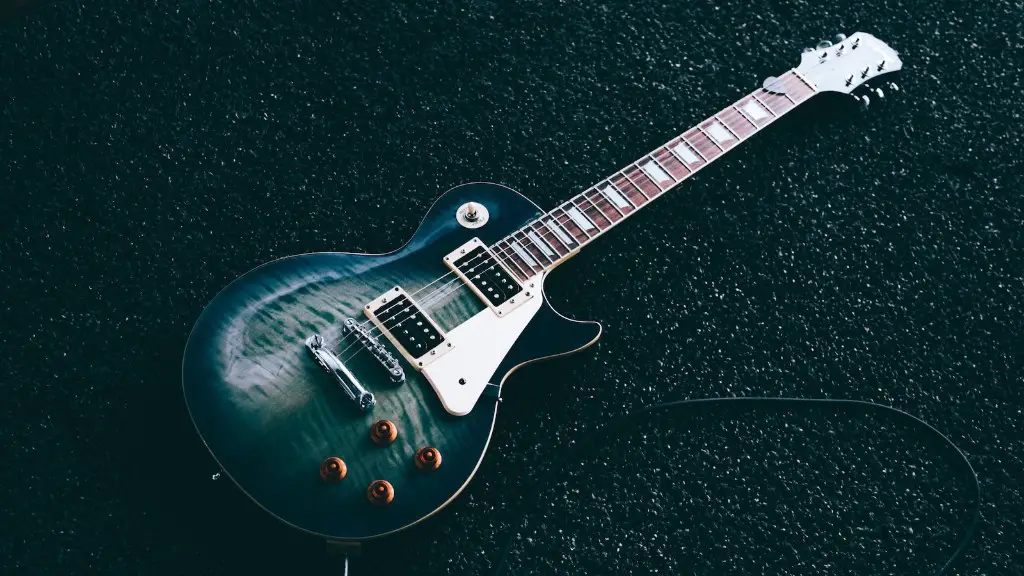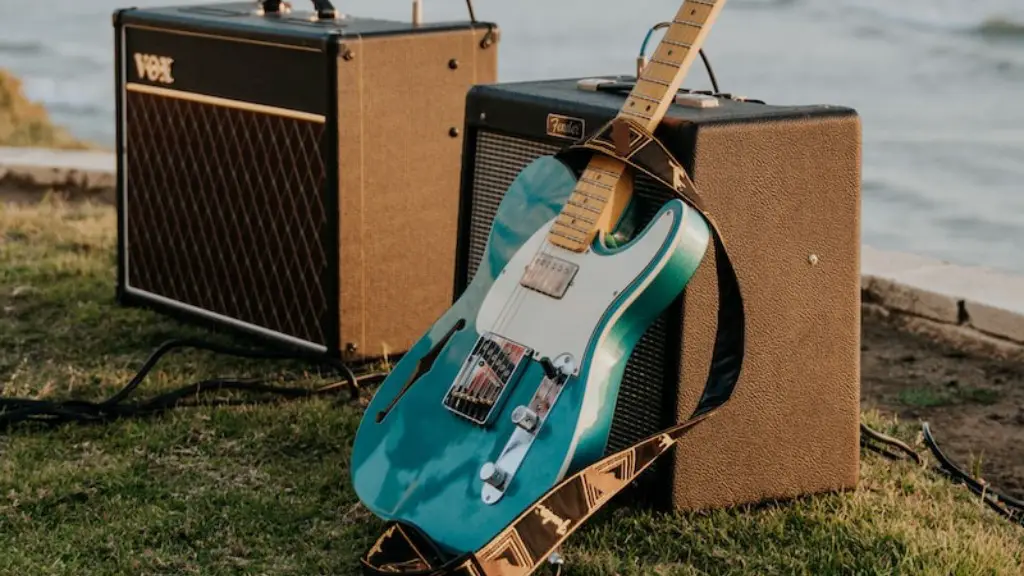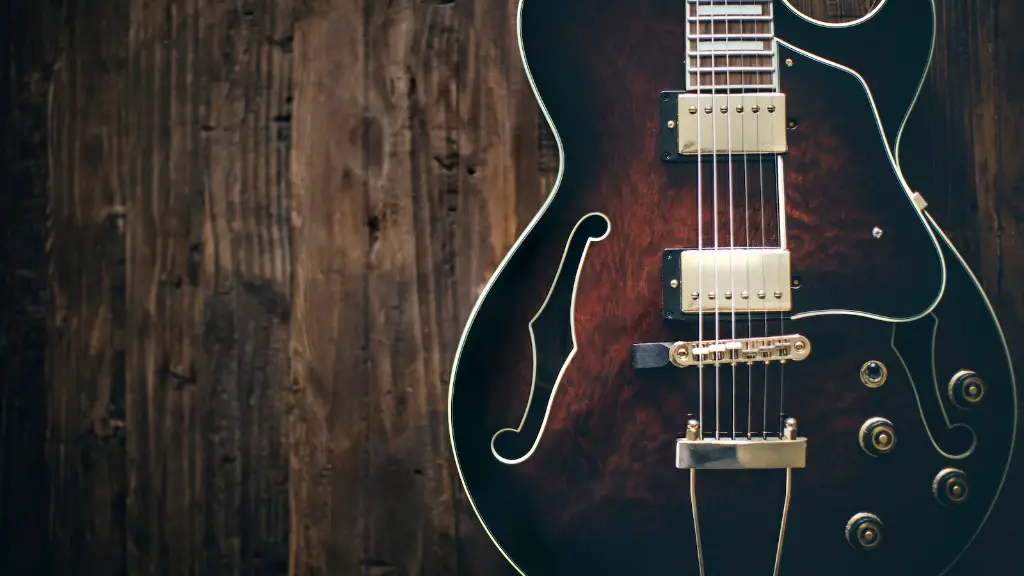The electric guitar is one of the most iconic instruments in modern music and its construction has improved significantly over the years.
Building an electric guitar is a complex process that involves numerous steps and requires a high level of craftsmanship. From selecting the right kind of wood, to wiring components, to assembling all of the parts together, building an electric guitar can be a daunting task for even experienced luthiers.
The first step in creating an electric guitar is selecting the right type of wood for the body and neck. Different types of wood have different tonal qualities, so it’s important to choose wisely. Next, components such as pickups and bridges are wired together. After that, all of the parts are assembled onto the body and neck and finished with a protective coating.
Finally, strings are added to complete the instrument. This process requires precise tuning and adjustment to ensure each string is perfectly in tune with each other. Once completed, electric guitars can produce amazing sounds that have been heard around the world!
Materials Used in Electric Guitar Manufacturing
Electric guitars are made with a variety of materials, including wood, metal, and plastic. The type of wood used in electric guitar manufacturing is usually chosen for its tonal quality and ability to resonate. Common woods used include ash, alder, basswood, mahogany and maple. Metal components such as the strings, pickups, bridge and frets are usually made of steel or nickel alloy. Plastic is also used for certain components such as the pickguard and control knobs. The combination of these materials works together to create different sounds.
In addition to the materials listed above, electric guitars may also be crafted with specialized parts like locking tuners or tremolo arms for added functionality. To finish an electric guitar’s look, it is often given a protective coating like nitrocellulose lacquer or polyurethane that can affect its tone. With so many pieces coming together to form one instrument, it’s clear why electric guitars are considered complex works of art.
Shaping the Body of an Electric Guitar
Electric guitars are made from wood, metal and plastic. The body of the guitar is usually made from solid wood, such as mahogany, alder or ash. The top of the guitar is often carved to give it an attractive shape and provide a comfortable surface for playing. The two halves of the body are then joined together with glue and screws. Once the body is complete, it is sanded down to create a smooth finish. Pickups are then added to allow sound to be amplified when plugged into an amplifier. Finally, the strings are attached to the bridge and tuning machines at either end of the neck.
The neck is usually made from maple or mahogany and has a truss rod running through it to keep it from bending or warping. The frets are then installed in slots cut into the fretboard before being polished and buffed for a smooth playing surface. Once all these components have been put together, then electric guitar can be strung up and ready for use!
Installing the Neck and Headstock
Installing the neck and headstock is the first step to assembling an electric guitar. The neck is usually made from several pieces of maple, and includes a fingerboard, frets, and tuning pegs. It is attached to the body of the guitar with screws placed through holes drilled in the body. The headstock is attached to the top of the neck and holds all of the tuning pegs. It also typically includes a logo or other decorative element that helps identify the guitar’s brand or model. The headstock must be precisely aligned with the neck so that it can hold strings in tune, which requires careful attention to detail.
Once complete, this assembly forms a strong foundation for creating an electric guitar that can produce amazing sounds. This process involves careful measurements and precise alignment in order for everything to fit together correctly and produce a great-sounding instrument. With proper installation of the neck and headstock, a skilled luthier can create a beautiful instrument that will last for years.
Attaching the Pickups
Electric guitars are made by attaching pickups to a wooden body. Pickups are magnets that create an electromagnetic field and pick up the vibrations of the strings. The pickups are wired to a control panel, which includes knobs and switches that allow the player to adjust the sound of their guitar. The pickups are then attached to a bridge and connected to an electronic circuit board, which amplifies the sound of the guitar. Finally, strings are attached and tuned to create a playable instrument.
The process of making an electric guitar involves attention to detail and precision, as even small adjustments can make a big difference in sound quality. To ensure that each instrument is made consistently, some manufacturers will use computer-controlled machines for precise measurements and adjustments. This process helps keep each electric guitar sounding its best.
At the end of this process, you have a finely crafted instrument that is ready for musicians to create beautiful music with. Electric guitars come in many styles and variations, so no two instruments will sound exactly alike – something that makes playing this iconic instrument even more exciting!
Installing the Electronics and Bridge
Electric guitars are made by attaching pickups, which are magnets that convert vibrations from strings into electrical signals, to an electronics plate or circuit board. This plate is then connected to a selector switch that allows the guitar player to choose which pickups they want to use. The electronics are then connected to knobs and sliders, which can be used to adjust the tone and volume of the guitar. Finally, a bridge is installed on the body of the guitar, typically by screwing it into place. This bridge holds the strings in place and helps transfer string vibration from the strings to the pickups. The bridge also helps maintain intonation, ensuring that notes played on different frets will sound in tune. Once these components are in place and wired together, the electric guitar is ready for play.
Finishing Touches on the Electric Guitar
The electric guitar is a classic instrument that has been around since the 1930s, and it’s still loved by many players today. To make an electric guitar, a number of components need to be assembled. The body must be made out of wood, usually maple or ash for optimal sound quality. A neck is then attached to the body and frets are placed along its length. The strings are then added, and pickups are added to the body which convert the vibrations from the strings into electrical signals. A bridge is used to hold the strings in place, and tuning pegs help keep them in tune. Finally, a nut is inserted between the fretboard and headstock to keep everything in place.
The last step for completing an electric guitar is adding finishing touches like cosmetics such as a paint job, knobs, pickguards, and switches. The construction of an electric guitar is complex but very rewarding when done right! When it’s all finished up, you can plug it in and enjoy playing your very own instrument!
Wrap Up
Electric guitars are a marvel of modern technology and artistry. From the woodworking to the wiring, each step of the process is essential to creating a beautiful instrument that produces a unique sound. The components of an electric guitar come together to form something truly special. The combination of craftsmanship and technology has enabled us to create instruments that perform at the highest level and provide musicians with endless possibilities for expression. At the end of the day, electric guitars are capable of producing a variety of tones, from smooth jazz melodies to heavy metal riffs.
It takes great skill and dedication to make an electric guitar, but it’s worth it in order to bring music lovers around the world joy. From start to finish, the process is intricate and requires precision in order to produce a quality instrument. With all this in mind, electric guitars are truly one of mankind’s greatest inventions!




